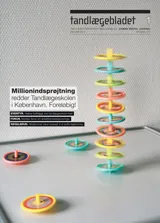Current concepts in dental adhesion
The use of restorative materials along with the adhesive techniques has become routine in today’s dental practice. However, the longevity of the adhesive restorations mainly depends on good bonding between restorative material and tooth structure, which should be achieved in situ, within minutes. While bonding to enamel is reliable through micromechanical retention, bonding to dentin presents challenges due to the moist structure of dentin. Contemporary adhesive techniques are based on the removal of the smear layer, (etch-andrinse adhesive systems), or incorporation of smear layer, (self-etch adhesive systems), into the bonded interface. There are also restorative materials with adhesive properties as glass-ionomer as well as newly introduced luting cements. Attempts to simplify the number of steps in adhesive systems have resulted in compromises in terms of bonding effectiveness, mechanical properties and shelf-life. Good resin encapsulation of the etched dentin is essential to minimize the degradation. Additional therapeutic agents such as chlorhexidine might increase the durability of resin-dentin bonds in vitro.
adhesives; longevity The use of restorative materials along with the adhesive techniques has become routine in today’s dental practice. However, the longevity of the adhesive restorations mainly depends on good bonding between restorative material and tooth structure, which should be achieved in situ, within minutes. While bonding to enamel is reliable through micromechanical retention, bonding to dentin presents challenges due to the moist structure of dentin. Contemporary adhesive techniques are based on the removal of the smear layer, (etch-andrinse adhesive systems), or incorporation of smear layer, (self-etch adhesive systems), into the bonded interface. There are also restorative materials with adhesive properties as glass-ionomer as well as newly introduced luting cements. Attempts to simplify the number of steps in adhesive systems have resulted in compromises in terms of bonding effectiveness, mechanical properties and shelf-life. Good resin encapsulation of the etched dentin is essential to minimize the degradation. Additional therapeutic agents such as chlorhexidine might increase the durability of resin-dentin bonds in vitro.


